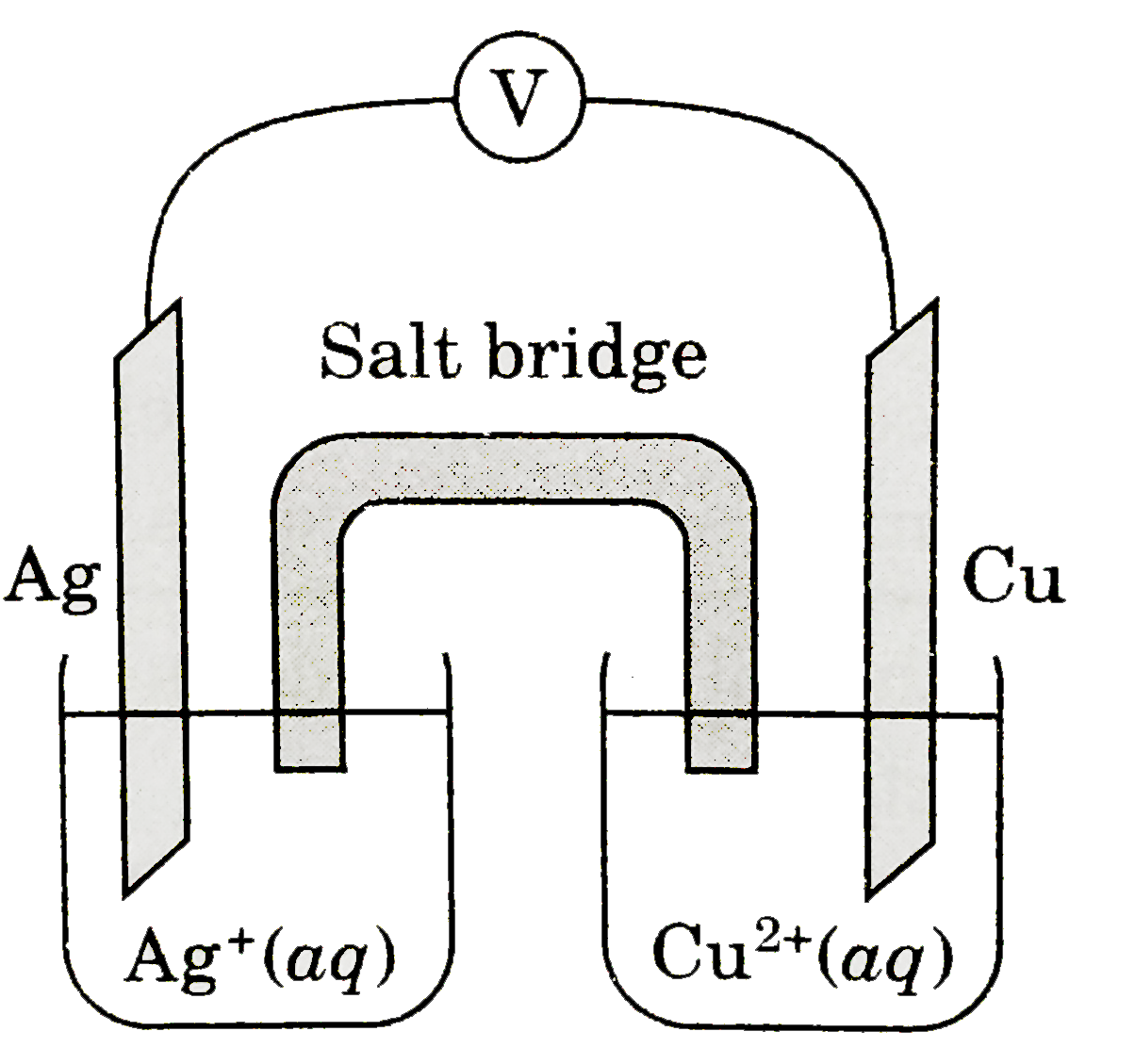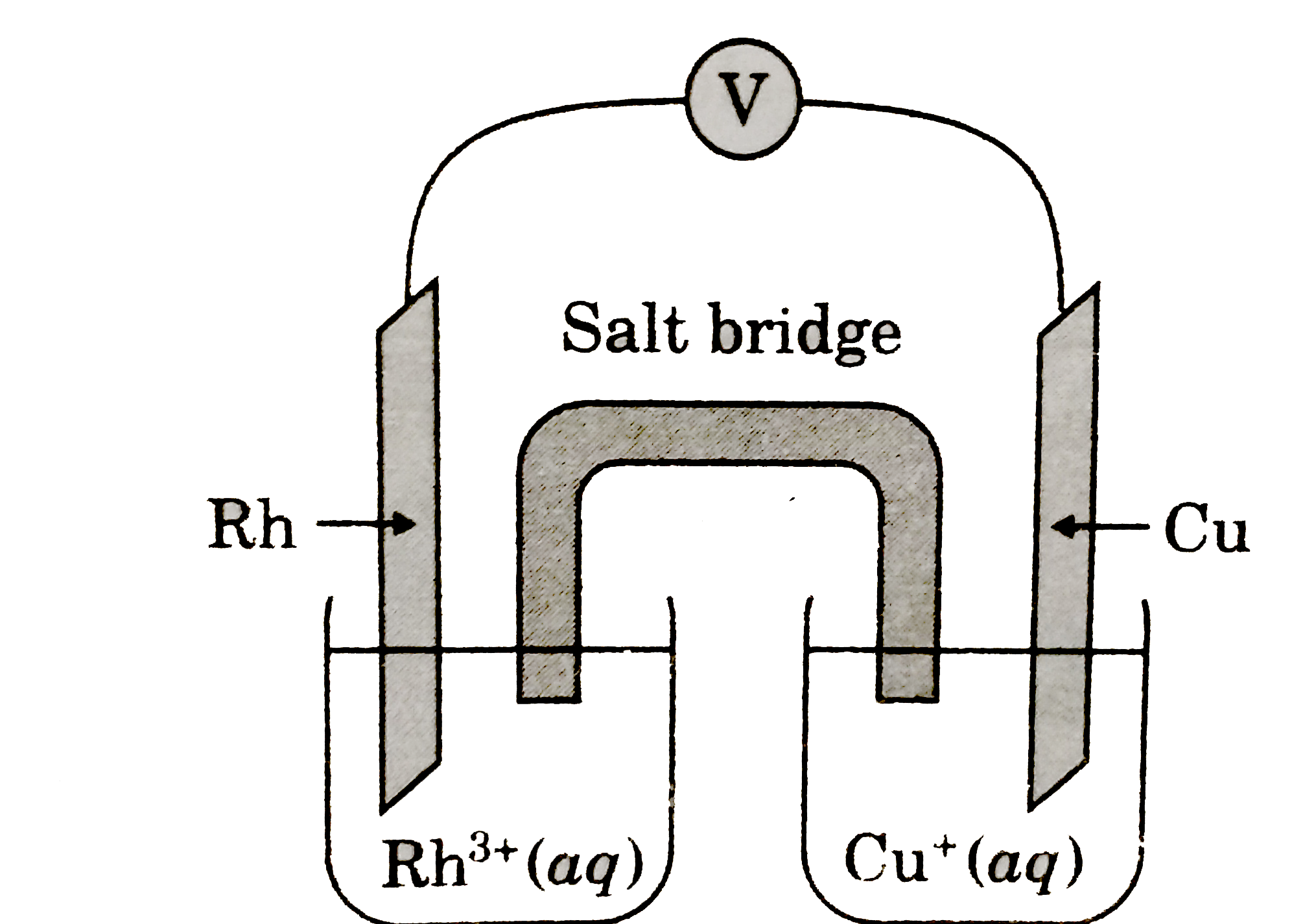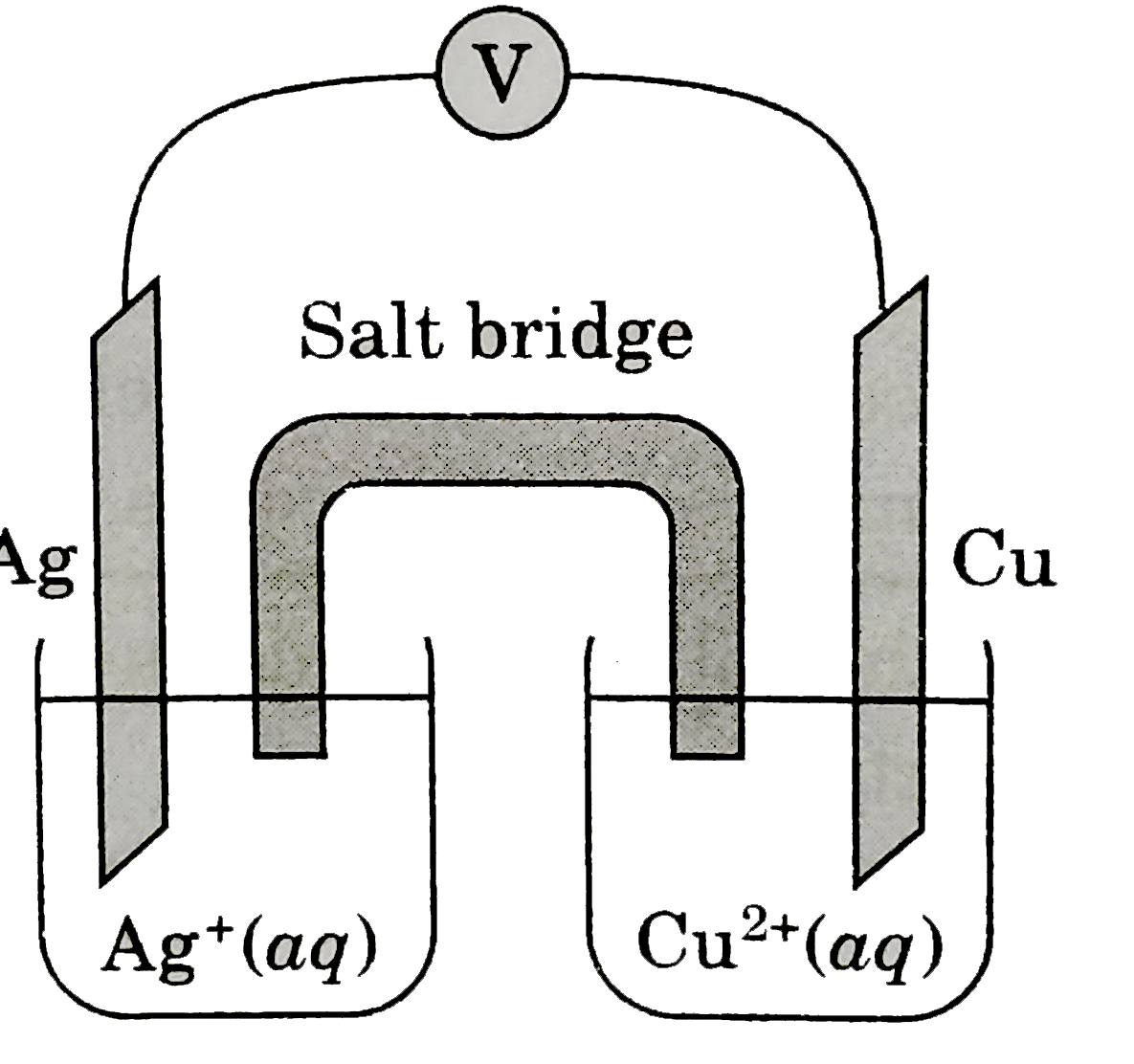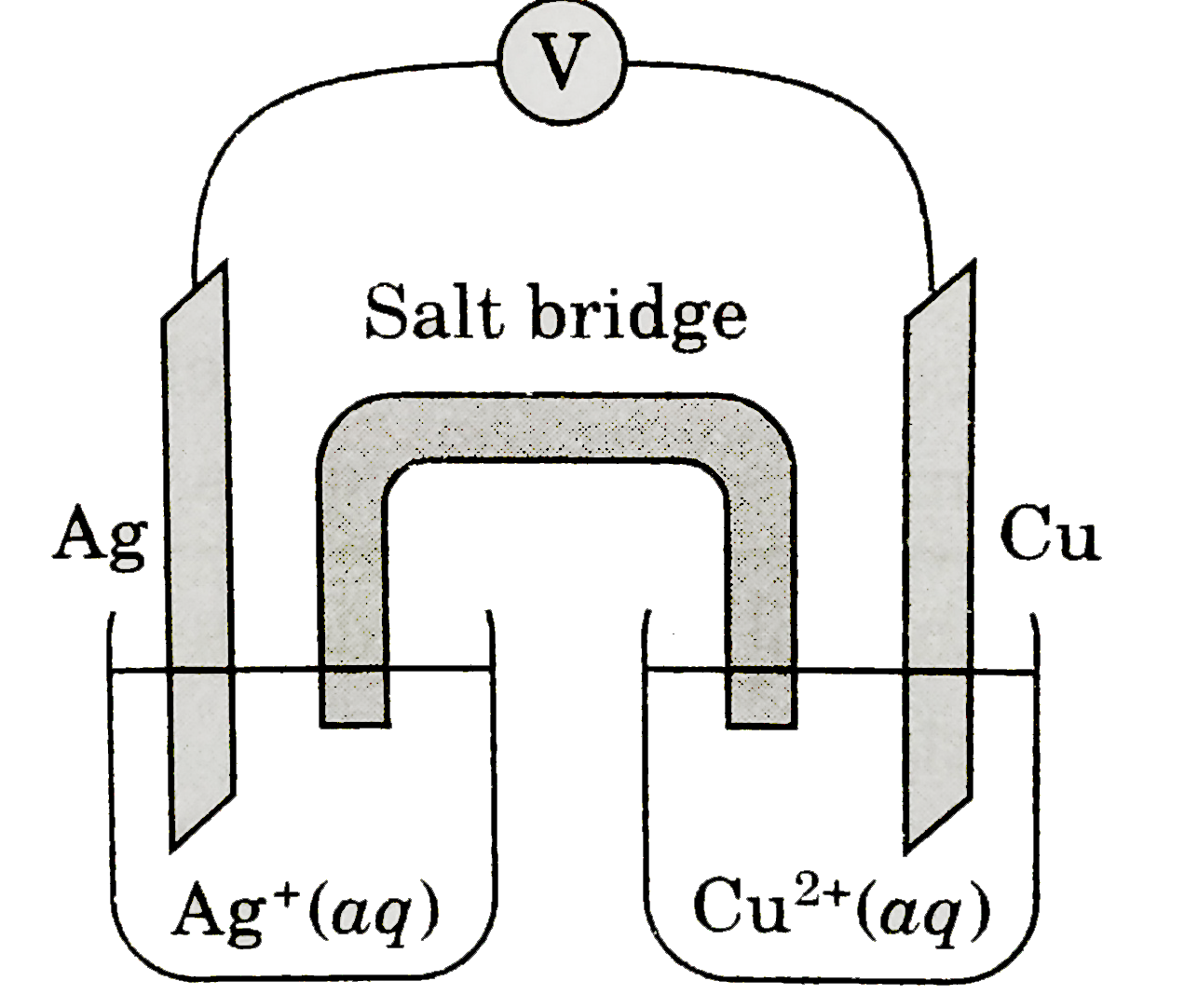Ag+(aq)+e−→Ag(s)E∘=0.80V
Cu2+(aq)+2e−→Cu(s)E∘=0.34V

Which increases immediately if the surface area of the silver electrode is increased?
Overall cell voltage
Rate of change of [Ag+]
Mass of Cu electrode
Change in ratio of electrode masses Δ(Mass of CuMass of Ag)
The correct Answer is:B
Step by step video, text & image solution for Ag^(+)(aq)+e^(-)rarrAg(s) E^(@)=0.80V Cu^(2+)(aq)+2e^(-)rarrCu(s) E^(@)=0.34V Which increases immediately if the surface area of the silver electrode is increased? by Chemistry experts to help you in doubts & scoring excellent marks in Class 12 exams.
Updated on:21/07/2023Topper's Solved these Questions
- ELECTROCHEMISTYBOOK - GRB PUBLICATIONCHAPTER - ELECTROCHEMISTYEXERCISE - Match the column type
16 Videos
- ELECTROCHEMISTYBOOK - GRB PUBLICATIONCHAPTER - ELECTROCHEMISTYEXERCISE - Subjective type
39 Videos
- ELECTROCHEMISTYBOOK - GRB PUBLICATIONCHAPTER - ELECTROCHEMISTYEXERCISE - Multiple objective type
33 Videos
- D-BLOCK ELEMENTSBOOK - GRB PUBLICATIONCHAPTER - D-BLOCK ELEMENTSEXERCISE - Subjective Type
18 Videos
- ENVIRONMENTAL CHEMISTRY BOOK - GRB PUBLICATIONCHAPTER - ENVIRONMENTAL CHEMISTRY EXERCISE - Straight objective type
40 Videos
Similar Questions
Rh03+(aq)+3e−→Rh(s)E∘=0.80V
Cu+(aq)+e−→Cu(s)E∘=0.52V

What is the voltage of this cell if the concentrations of Cu+ and Rh3+ are each 1 M?
View SolutionRh03+(aq)+3e−→Rh(s)E∘=0.80V
Cu+(aq)+e−→Cu(s)E∘=0.52V

What is the direction of electronflow in the external circuit if the concentrations of Cu+ and Rh3+ are each 1M?
View Solution
Knowledge Check
Ag+(aq)+e−→Ag(s)E∘=0.80V
Cu2+(aq)+2e−→Cu(s)E∘=0.34V

What is the value for ΔG∘ when [Ag+]=[Cu+]=1.0M?A−44.4kJB−88.8kJC−242kJD−374kJAg+(aq)+e−→Ag(s)E∘=0.80V
Cu2+(aq)+2e−→Cu(s)E∘=0.34V

Which expression gives the voltage for this cell if [Cu2+]=1.00M and [Ag+]=0.010M?A0.46V+0.0591VB0.46V+2xx0.0591VC0.46V-0.0591VD0.46V-2xx0.0591VConsider a voltaic cell based on these half - cell reactions
Ag+(aq)+e−→Ag(s):E∘=+0.80V
Cd+2(aq)+2e−→Cd(s),E∘=−0.40V
identify the anode and give the voltage of this cell under standard condition.AAg,E∘cell=0.40VBAg,E∘cell=2.00VCCd,E∘cell=1.20VDCd,E∘cell=2.00V
Consider a volatic cell based on these half -cell :
Ag+(aq.)+e−→Ag(s),E∘=+0.80V
Cd2+(aq)+2e−→Cd(s),E∘=−0.40V
Identify the anode and give the voltage of this cell under standard conditions
View SolutionAg+(aq)+e−→Ag(s) E∘=0.80V
Co2+(aq)+2e(−)→Co(s) E∘=−0.28V
Use the standard reduction potentials to determine the standard potential for the reaction:
Co(s)+2Ag+(aq□)→Co2+(aq)+2Ag(s)
View SolutionAl3+(aq)+3e−→Al(s) E∘=−1.66V
Cu2+(aq)+2e−→Cu(s) E∘=+0.34V
What voltage is produced under standard conditions by combining the half-reactions witih these standard Electrode Potential?
View SolutionAgaq+e−→Ag(s) E69∘)=0.80V
Mg2+(aq)+2e−→Mg(s) E∘=−2.73V
Use the equations above to calcualte the value or ΔG∘0 (in kJ/mol) for the reaction:
Mg(s)+2Ag+(aq)→Mg2+(aq)+2Ag(s)
View SolutionGiven that standard potential for the following half - cell reaction at 298 K,
Cu+(aq)+e−→Cu(s),E∘=0.52V
Cu2+(aq)+e−→Cu+(aq),E∘=0.16V
Calculate the ΔG∘(kJ) for the eaction, [2Cu+(aq)→Cu(s)+Cu2+]
View Solution